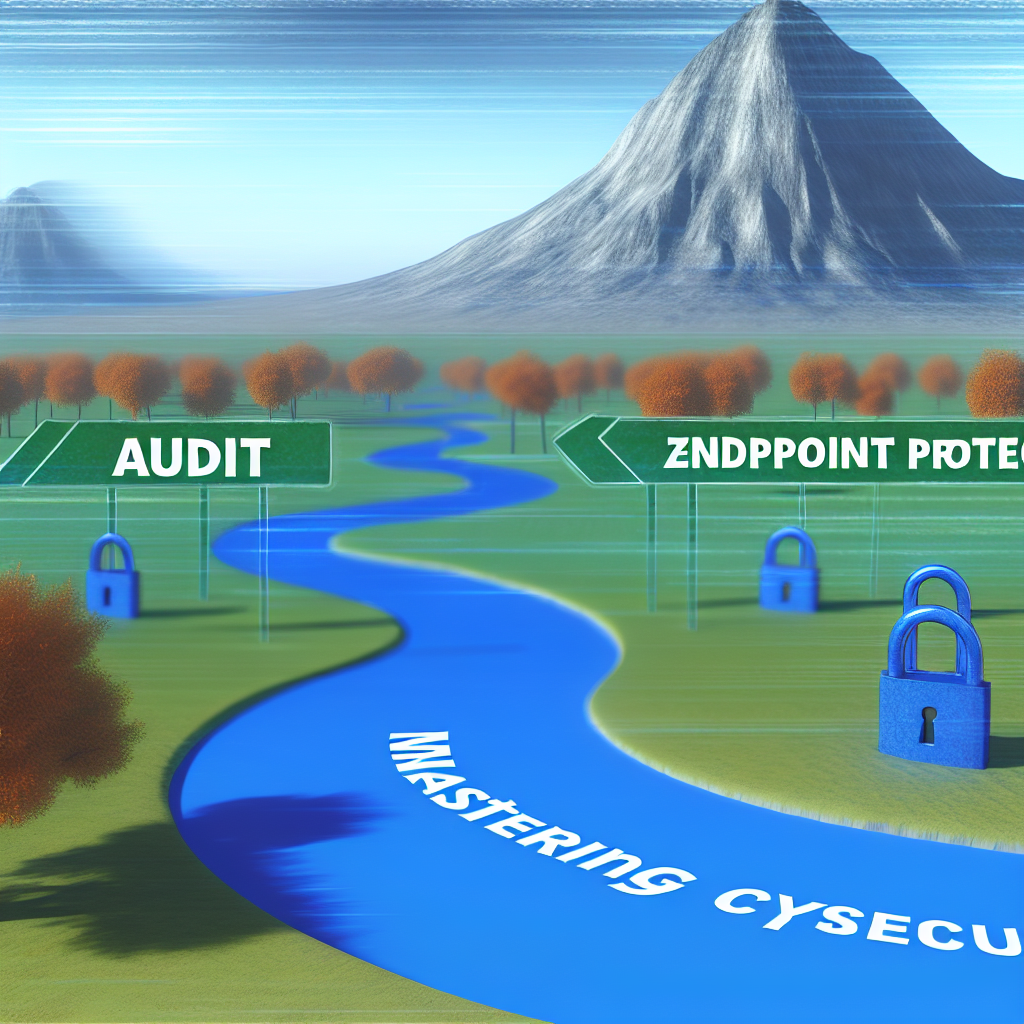Importance Of Healthcare Data Loss Prevention In Protecting Patient Privacy
In the rapidly evolving landscape of healthcare, the protection of patient data has become a paramount concern. As healthcare providers increasingly rely on digital systems to store and manage patient information, the risk of data breaches and unauthorized access has grown exponentially. This is where Data Loss Prevention (DLP) strategies come into play, serving as a critical component in safeguarding patient privacy. The importance of DLP in healthcare cannot be overstated, as it not only protects sensitive information but also ensures compliance with stringent regulatory requirements.
To begin with, healthcare providers handle vast amounts of sensitive data, including personal identification details, medical histories, and financial information. This data is highly attractive to cybercriminals, who can exploit it for identity theft, insurance fraud, and other malicious activities. Consequently, the implementation of robust DLP measures is essential to prevent unauthorized access and data breaches. By employing advanced encryption techniques, access controls, and real-time monitoring, healthcare organizations can significantly reduce the risk of data loss and ensure that patient information remains confidential.
Moreover, the healthcare industry is subject to a myriad of regulations designed to protect patient privacy, such as the Health Insurance Portability and Accountability Act (HIPAA) in the United States. These regulations mandate that healthcare providers implement comprehensive security measures to protect patient data. Failure to comply with these regulations can result in severe penalties, including hefty fines and reputational damage. Therefore, DLP is not only a matter of protecting patient privacy but also a legal obligation for healthcare providers. By adhering to these regulations, healthcare organizations can avoid legal repercussions and maintain the trust of their patients.
In addition to regulatory compliance, DLP plays a crucial role in maintaining the integrity and availability of patient data. In the event of a data breach, the loss or corruption of patient information can have dire consequences, potentially compromising patient care and safety. For instance, if a healthcare provider is unable to access a patient’s medical history due to a data breach, it could lead to misdiagnosis or inappropriate treatment. Thus, DLP strategies are vital in ensuring that patient data remains accurate and accessible, thereby supporting the delivery of high-quality healthcare services.
Furthermore, the implementation of DLP measures can enhance the overall security posture of healthcare organizations. By identifying and mitigating potential vulnerabilities, healthcare providers can proactively address security threats before they result in data loss. This proactive approach not only protects patient privacy but also fosters a culture of security awareness within the organization. Employees become more vigilant and informed about the importance of data protection, leading to a more secure and resilient healthcare environment.
In conclusion, the importance of Data Loss Prevention in healthcare cannot be underestimated. As the industry continues to embrace digital transformation, the protection of patient data must remain a top priority. By implementing robust DLP strategies, healthcare providers can safeguard sensitive information, ensure regulatory compliance, and maintain the trust of their patients. Ultimately, the adoption of effective DLP measures is essential in protecting patient privacy and supporting the delivery of safe and efficient healthcare services. As such, healthcare organizations must remain vigilant and committed to continuously enhancing their data protection efforts in an ever-evolving digital landscape.
Strategies For Secure Patient Data In Healthcare Organizations
In the rapidly evolving landscape of healthcare, the protection of patient data has become a paramount concern for healthcare providers. As the industry increasingly relies on digital systems to store and manage sensitive information, the risk of data breaches and unauthorized access has grown exponentially. Consequently, implementing robust data loss prevention (DLP) strategies is critical for healthcare organizations to safeguard patient data and maintain trust.
To begin with, healthcare providers must recognize the unique challenges they face in protecting patient data. Unlike other industries, healthcare organizations handle a vast amount of sensitive information, including personal identification details, medical histories, and financial data. This makes them prime targets for cybercriminals seeking to exploit vulnerabilities for financial gain or malicious intent. Therefore, a comprehensive approach to data security is essential to mitigate these risks.
One effective strategy for securing patient data is the adoption of advanced encryption techniques. By encrypting data both at rest and in transit, healthcare providers can ensure that even if data is intercepted or accessed without authorization, it remains unreadable and unusable to unauthorized parties. This layer of protection is crucial in maintaining the confidentiality and integrity of patient information.
In addition to encryption, healthcare organizations should implement strict access controls to limit who can view or modify patient data. Role-based access control (RBAC) is a widely used method that assigns permissions based on an individual’s role within the organization. By restricting access to only those who need it to perform their duties, healthcare providers can significantly reduce the risk of data breaches caused by internal threats or human error.
Moreover, regular audits and monitoring of data access and usage are vital components of a robust DLP strategy. By continuously monitoring who accesses patient data and how it is used, healthcare organizations can quickly identify and respond to suspicious activities. This proactive approach not only helps in detecting potential breaches early but also ensures compliance with regulatory requirements such as the Health Insurance Portability and Accountability Act (HIPAA).
Furthermore, employee training and awareness programs play a crucial role in enhancing data security. Healthcare staff must be educated about the importance of data protection and the potential consequences of data breaches. By fostering a culture of security awareness, healthcare organizations can empower their employees to recognize and report potential threats, thereby strengthening the overall security posture.
Incorporating advanced technologies such as artificial intelligence (AI) and machine learning (ML) can also bolster data loss prevention efforts. These technologies can analyze vast amounts of data to identify patterns and anomalies that may indicate a security threat. By leveraging AI and ML, healthcare providers can enhance their ability to detect and respond to potential breaches in real-time, thereby minimizing the impact on patient data.
Finally, healthcare organizations should establish a comprehensive incident response plan to address data breaches swiftly and effectively. This plan should outline the steps to be taken in the event of a breach, including communication with affected patients, regulatory bodies, and other stakeholders. A well-defined incident response plan ensures that healthcare providers can minimize damage, restore systems, and maintain trust with patients and partners.
In conclusion, the protection of patient data is a critical responsibility for healthcare providers. By implementing a multi-faceted data loss prevention strategy that includes encryption, access controls, monitoring, employee training, advanced technologies, and incident response planning, healthcare organizations can effectively safeguard sensitive information and uphold the trust placed in them by patients and the broader community.
Best Practices For Data Protection In Healthcare Settings
In the rapidly evolving landscape of healthcare, the protection of sensitive patient data has become a paramount concern. As healthcare providers increasingly rely on digital systems to store and manage patient information, the risk of data breaches and unauthorized access has grown exponentially. Consequently, implementing robust data loss prevention (DLP) strategies is critical for healthcare providers to safeguard patient privacy and maintain trust. To achieve this, healthcare organizations must adopt best practices for data protection that address the unique challenges of the healthcare environment.
First and foremost, healthcare providers should prioritize the encryption of sensitive data both at rest and in transit. Encryption serves as a formidable barrier against unauthorized access, ensuring that even if data is intercepted or accessed without permission, it remains unintelligible to malicious actors. By employing strong encryption protocols, healthcare organizations can significantly reduce the risk of data breaches and protect patient information from being compromised.
In addition to encryption, healthcare providers must implement comprehensive access controls to ensure that only authorized personnel have access to sensitive data. This involves establishing role-based access controls (RBAC) that limit data access based on an individual’s job responsibilities. By doing so, healthcare organizations can minimize the risk of internal data breaches and ensure that employees only have access to the information necessary for their roles. Furthermore, regular audits and monitoring of access logs can help identify any unauthorized access attempts, allowing for swift corrective action.
Another critical aspect of data protection in healthcare settings is the regular training and education of staff on data security best practices. Human error remains one of the leading causes of data breaches, often due to a lack of awareness or understanding of security protocols. By providing ongoing training and resources, healthcare providers can empower their staff to recognize potential security threats and respond appropriately. This proactive approach not only enhances the overall security posture of the organization but also fosters a culture of vigilance and responsibility among employees.
Moreover, healthcare providers should establish a robust incident response plan to address potential data breaches swiftly and effectively. An incident response plan outlines the steps to be taken in the event of a data breach, including the identification, containment, and mitigation of the breach, as well as communication with affected parties. By having a well-defined plan in place, healthcare organizations can minimize the impact of a data breach and ensure a timely and coordinated response.
Furthermore, healthcare providers must stay abreast of evolving regulatory requirements and industry standards related to data protection. Compliance with regulations such as the Health Insurance Portability and Accountability Act (HIPAA) is not only a legal obligation but also a critical component of a comprehensive data protection strategy. By adhering to these regulations, healthcare organizations can ensure that they are implementing the necessary safeguards to protect patient data and avoid costly penalties.
In conclusion, the importance of data loss prevention in healthcare settings cannot be overstated. By adopting best practices such as encryption, access controls, staff training, incident response planning, and regulatory compliance, healthcare providers can effectively protect sensitive patient data and maintain the trust of their patients. As the healthcare industry continues to embrace digital transformation, the need for robust data protection measures will only become more critical, underscoring the importance of a proactive and comprehensive approach to data loss prevention.
Enhancing IT Safety For Healthcare Providers To Prevent Data Breaches
In the rapidly evolving landscape of healthcare, the protection of sensitive patient information has become a paramount concern. As healthcare providers increasingly rely on digital systems to store and manage patient data, the risk of data breaches has escalated, necessitating robust data loss prevention (DLP) strategies. The critical nature of DLP in healthcare cannot be overstated, as it serves as a fundamental component in safeguarding patient privacy and maintaining the integrity of healthcare systems.
To begin with, healthcare providers handle vast amounts of sensitive data, including personal identification information, medical histories, and financial details. This data is not only essential for delivering quality care but also highly attractive to cybercriminals. Consequently, the healthcare sector has become a prime target for cyberattacks, with data breaches potentially leading to severe consequences such as identity theft, financial loss, and compromised patient safety. Therefore, implementing effective DLP measures is crucial to mitigate these risks and protect both patients and healthcare organizations.
Moreover, regulatory compliance further underscores the importance of DLP in healthcare. Laws such as the Health Insurance Portability and Accountability Act (HIPAA) in the United States mandate stringent data protection standards to ensure patient confidentiality. Non-compliance with these regulations can result in hefty fines and legal repercussions, not to mention the damage to an organization’s reputation. By adopting comprehensive DLP strategies, healthcare providers can ensure compliance with these regulations, thereby avoiding legal pitfalls and maintaining trust with their patients.
In addition to regulatory compliance, the integration of DLP solutions into healthcare IT systems enhances the overall security posture of these organizations. DLP tools are designed to monitor, detect, and prevent unauthorized access to sensitive data, whether it is in use, in motion, or at rest. By employing advanced technologies such as encryption, access controls, and real-time monitoring, healthcare providers can effectively thwart potential data breaches before they occur. This proactive approach not only protects patient data but also fortifies the resilience of healthcare systems against evolving cyber threats.
Furthermore, the implementation of DLP measures fosters a culture of security awareness within healthcare organizations. By educating staff on the importance of data protection and providing training on best practices, healthcare providers can significantly reduce the risk of human error, which is often a leading cause of data breaches. Encouraging a security-conscious mindset among employees ensures that everyone within the organization is vigilant and committed to safeguarding patient information.
As healthcare continues to embrace digital transformation, the role of DLP becomes increasingly vital. The adoption of electronic health records (EHRs), telemedicine, and other digital health solutions has expanded the attack surface for cybercriminals. Consequently, healthcare providers must prioritize DLP as an integral part of their IT safety strategy to protect against data breaches. By doing so, they not only secure patient data but also enhance the overall quality of care, as patients can trust that their information is handled with the utmost care and confidentiality.
In conclusion, data loss prevention is a critical component of IT safety for healthcare providers. It not only ensures compliance with regulatory standards but also strengthens the security infrastructure of healthcare organizations. By implementing robust DLP measures, healthcare providers can protect sensitive patient information, prevent data breaches, and maintain the trust and confidence of their patients. As the healthcare industry continues to evolve, the importance of DLP will only grow, making it an indispensable element of modern healthcare practices.
The Role Of Data Loss Prevention In Preventing Healthcare Data Breaches
In the rapidly evolving landscape of healthcare, the protection of sensitive patient information has become a paramount concern. As healthcare providers increasingly rely on digital systems to store and manage patient data, the risk of data breaches has escalated, making data loss prevention (DLP) a critical component in safeguarding this information. The role of DLP in preventing healthcare data breaches cannot be overstated, as it serves as a vital line of defense against unauthorized access and data theft.
To begin with, healthcare providers handle vast amounts of sensitive data, including personal identification information, medical histories, and financial details. This data is not only valuable to cybercriminals but also subject to stringent regulations such as the Health Insurance Portability and Accountability Act (HIPAA) in the United States. Non-compliance with these regulations can result in severe penalties, making it imperative for healthcare organizations to implement robust DLP strategies. By employing DLP solutions, healthcare providers can monitor and control data flow within their networks, ensuring that sensitive information is not inadvertently or maliciously leaked.
Moreover, the integration of DLP systems into healthcare IT infrastructure allows for the identification of potential vulnerabilities and the implementation of preventive measures. For instance, DLP tools can detect unusual patterns of data access or transfer, which may indicate a security breach. By alerting IT personnel to these anomalies, healthcare providers can take swift action to mitigate risks before they escalate into full-blown data breaches. This proactive approach not only protects patient data but also helps maintain the trust and confidence of patients in the healthcare system.
In addition to monitoring data flow, DLP solutions play a crucial role in data encryption and access control. Encryption ensures that even if data is intercepted, it remains unreadable to unauthorized individuals. Access control mechanisms, on the other hand, restrict data access to authorized personnel only, thereby minimizing the risk of internal threats. These features are essential in a healthcare setting, where multiple stakeholders, including doctors, nurses, and administrative staff, require access to patient information. By implementing DLP measures, healthcare providers can ensure that data is accessed and shared securely, reducing the likelihood of breaches.
Furthermore, the adoption of DLP strategies aligns with the growing trend of digital transformation in healthcare. As telemedicine, electronic health records (EHRs), and mobile health applications become more prevalent, the attack surface for cyber threats expands. DLP solutions can adapt to these changes by providing comprehensive protection across various platforms and devices. This adaptability is crucial in maintaining the integrity and confidentiality of patient data in an increasingly interconnected healthcare environment.
In conclusion, the role of data loss prevention in preventing healthcare data breaches is indispensable. By safeguarding sensitive information through monitoring, encryption, and access control, DLP solutions help healthcare providers comply with regulatory requirements and protect patient privacy. As the healthcare industry continues to embrace digital technologies, the implementation of robust DLP strategies will be essential in mitigating the risks associated with data breaches. Ultimately, by prioritizing data loss prevention, healthcare providers can enhance their security posture, ensuring that patient data remains protected in an ever-evolving digital landscape.
Protect patient data and ensure compliance with regulations by implementing robust Data Loss Prevention strategies. Discover how to safeguard sensitive information and maintain trust in your healthcare services. Learn more about Data Loss Prevention for healthcare providers.











